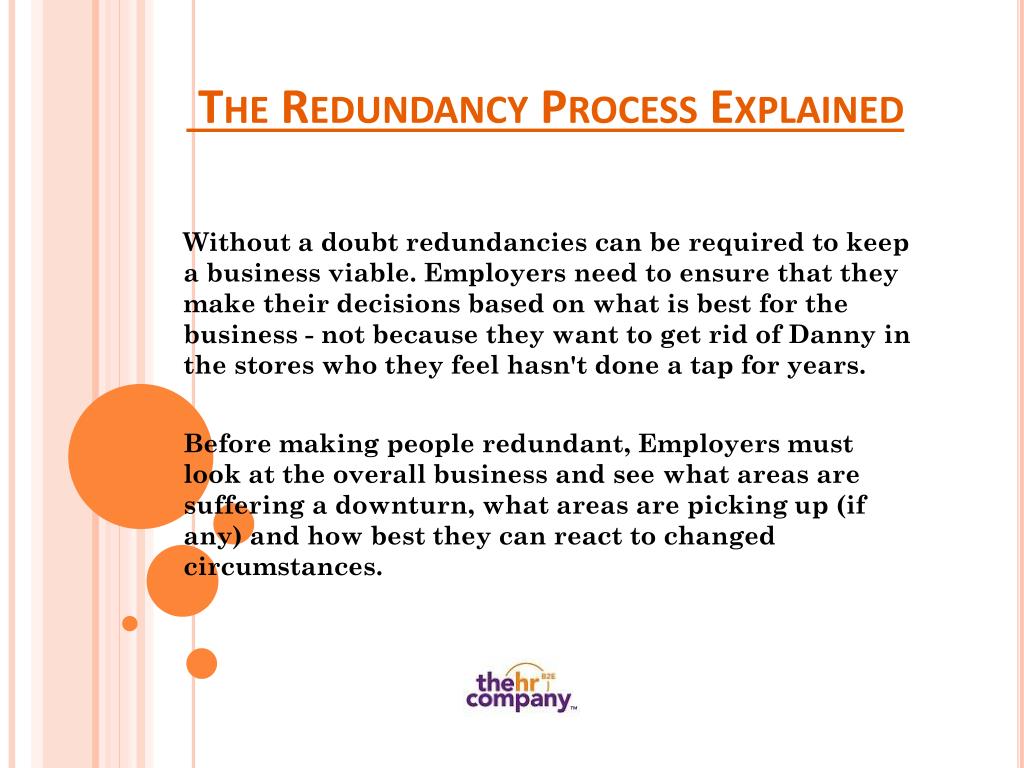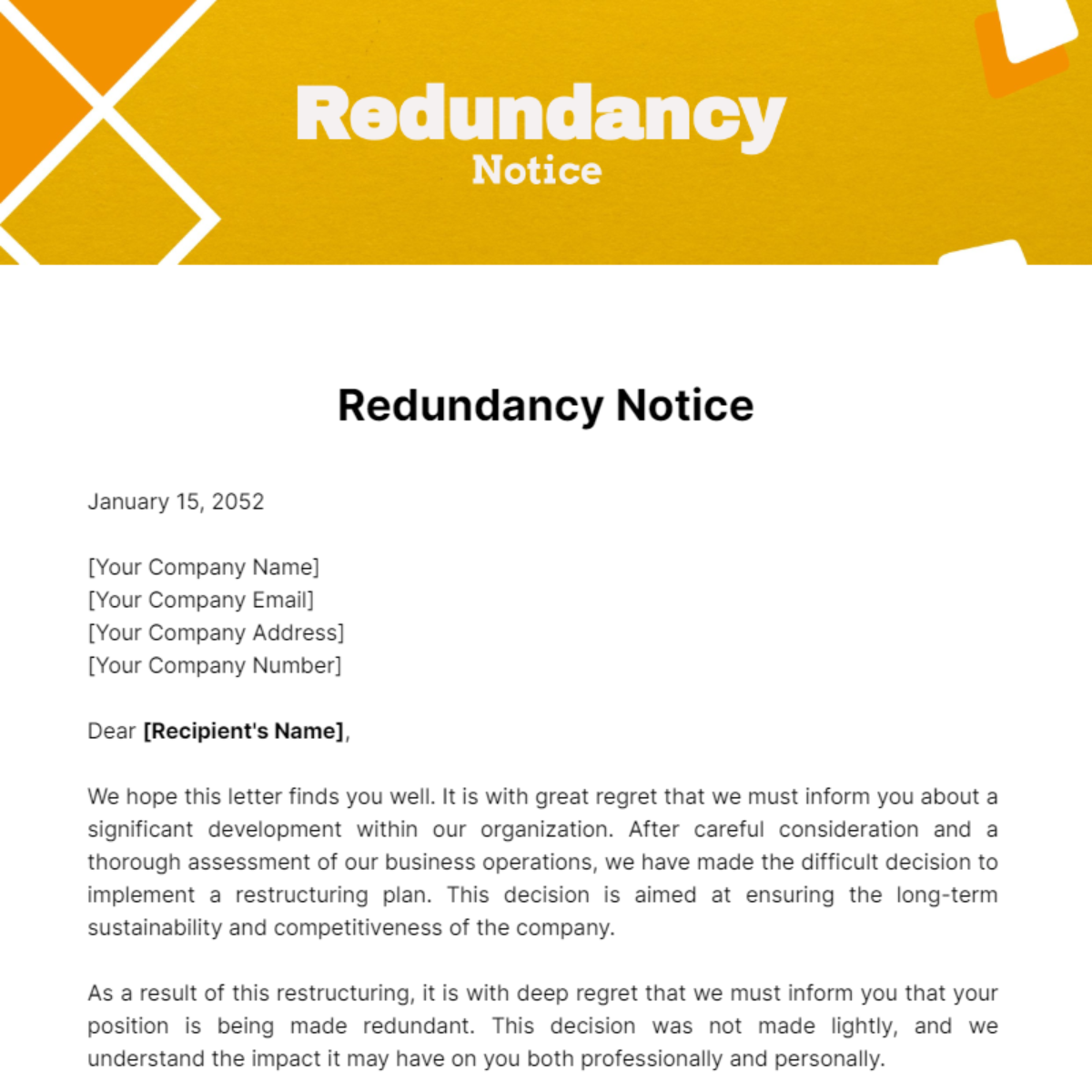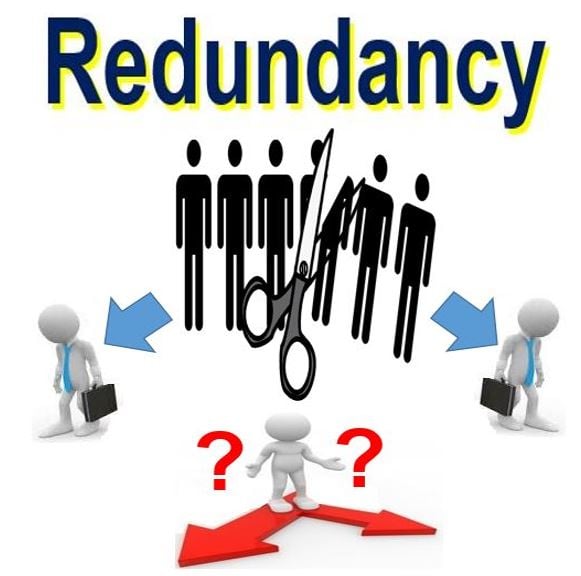Who Pays Redundancy Money? A Comprehensive Overview for Employers and Employees
Who Pays Redundancy Money? A Comprehensive Overview for Employers and Employees
Blog Article
Checking Out the Operational Dynamics of Business Redundancy and Its Long-Term Sustainability

Redundancy Strategies for Service Connection
In order to guarantee continuous procedures, services have to apply efficient redundancy techniques for company continuity. Redundancy in this context describes the duplication of important parts or features within a system to mitigate the effect of potential failings. By including redundancy strategies, organizations can enhance their durability against disruptions brought on by various factors such as natural catastrophes, devices failings, or cyber-attacks.
One typical redundancy strategy is the implementation of back-up systems and data storage space services. This includes developing duplicates of necessary data and systems that can be triggered in situation of a primary system failing. Furthermore, companies can develop redundant interaction networks and source of power to keep connection and operations throughout unpredicted occasions.
Furthermore, cross-training workers to execute numerous duties within the business can act as a beneficial redundancy strategy. If vital workers are inaccessible due to illness or various other factors, this ensures that vital tasks can still be brought out even. On the whole, effective redundancy methods are vital for businesses to maintain operational continuity and reduce the influence of prospective disturbances.
Impact of Redundancy on Organizational Durability
Given the vital role redundancy strategies play in making certain business continuity, checking out the impact of redundancy on business durability becomes essential for recognizing the all natural operational characteristics of a company. Organizational durability describes an entity's capability to adapt to disruptions, recover from troubles, and transform when essential while keeping core functions. Redundancy, when tactically implemented, can dramatically add to enhancing an organization's strength despite unforeseen difficulties. By having backup systems, workers, or processes in position, business can better hold up against shocks and continue operations with very little disruption.
In addition, redundancy can strengthen employee morale and confidence, knowing that there are backup plans in position to resolve unexpected scenarios. This feeling of safety can bring about boosted efficiency and a much more positive work environment. Additionally, redundancy can promote development and creativity within a company as workers feel empowered to take calculated threats, recognizing that there is a safeguard to sustain them in instance of failure. Overall, the impact of redundancy on organizational durability is profound, forming the long-lasting sustainability and success of a business.
Balancing Efficiency and Flexibility in Redundancy
Accomplishing an unified balance between operational efficiency and flexible flexibility is a pivotal difficulty in the strategic release of redundancy within companies. Effective operations are essential for preserving productivity and cost-effectiveness, ensuring that resources are made use of optimally. Nonetheless, extreme emphasis on performance alone can cause rigidness, making it challenging for companies to adjust to unanticipated changes or difficulties. On the various other hand, flexibility enables companies to react nimbly to evolving conditions, promoting technology and durability. Yet, excessive adaptability without a solid operational structure can result in inefficiencies and inconsistency.
To stabilize performance and adaptability in redundancy planning, companies should thoroughly examine their functional requirements, market dynamics, and critical goals. Inevitably, discovering the appropriate balance in between performance and flexibility is crucial for developing a resilient and sustainable company in the face of unpredictability.
Long-Term Sustainability With Redundancy Planning
To ensure long-lasting stability and security, organizations must strategically align their redundancy preparation with long-term sustainability objectives, therefore balancing functional efficiency with flexible versatility. Lasting sustainability via redundancy planning includes even more than just temporary cost-cutting actions. It requires a thorough strategic method that expects future challenges and possibilities. Companies must view redundancy not as a reactive option to instant problems however as a positive technique for long-lasting success. By incorporating redundancy planning with sustainability objectives, companies can produce a resilient structure that can stand up to different market variations and inner adjustments.

Aggressive Measures for Lasting Business Procedures
Exactly how can firms proactively improve their functional sustainability for long-term success? Applying proactive measures is crucial for companies intending to make certain sustainable operations.
Furthermore, fostering a culture of continual renovation and understanding within the organization can improve adaptability to altering market problems and consumer demands. Motivating worker involvement in decision-making procedures and providing chances for specialist growth can increase morale, performance, and overall performance. Developing clear goals, keeping an eye on key efficiency signs, and frequently assessing progress are essential parts of positive sustainability management.
Teaming up with providers, clients, and other stakeholders to advertise sustainable methods throughout the supply chain can develop a surge effect of favorable impact - redundancy pay if company goes bust. By taking aggressive actions towards functional sustainability, companies can build resilience, drive advancement, and secure their lasting success in an ever-evolving business landscape
Final Thought

In the world of business administration, the tactical implementation of company redundancy stands as an essential yet detailed practice that necessitates a fragile equilibrium in between functional effectiveness and long-lasting viability. By exploring the functional characteristics that underpin firm redundancy and reviewing its broader implications for business durability and versatility, a nuanced understanding of how redundancy approaches can shape the future trajectory of a firm begins to unfold.Offered the critical role redundancy techniques play official site in guaranteeing company connection, discovering the influence of redundancy on organizational durability becomes crucial for comprehending the all natural operational dynamics of a business. Generally, the effect of redundancy on business strength is profound, shaping the long-lasting sustainability and success of a firm.
In verdict, understanding the operational dynamics of blog here business redundancy is essential for ensuring long-term sustainability.
Report this page